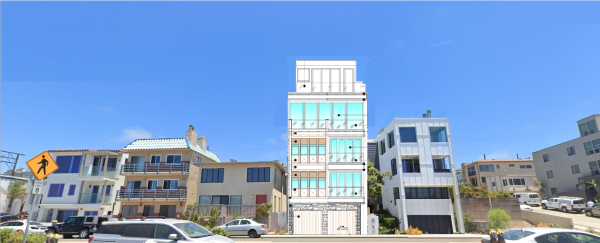
After declaring energy company AES’ application to re-construct its Harbor Dr. plant “data adequate” this week, the California Energy Commission is preparing to launch a full review of the proposed project.
District 2 councilmember Bill Brand, who has studied AES’ application comprehensively and has been fighting a long battle to oppose it, called the commission’s announcement “an important milestone.”
“It starts the unofficial clock ticking,” Brand said. “Now they [commission staff] start actually evaluating the project.”
AES submitted its application for certification of its proposed plant in November of last year, and on Jan. 9 the California Energy Commission (CEC) decided the submission did not contain adequate information about the project’s transmission system design or its potential impacts on air quality, local biology, culture, traffic, and waste. The state energy authority also determined that the application did not adequately explore the possibility of building the plant somewhere other than Harbor Dr.
AES subsequently added to its proposal, and this week the amended version of its application was deemed suitable enough to kick-start a lengthy evaluation process.
The CEC also agreed Tuesday to name commissioner Karen Douglas the presiding member reviewing the project, and commissioner Janea Scott the associate committee member.
The committee they serve on will be responsible for determining whether AES’ project meets state regulations and complies with the California Environmental Quality Act. It is expected to hold public meetings in Redondo Beach – the first one is likely to be in October – so as to inform its report and ultimately its decision.
According to a press release issued by the CEC, it is the commission’s duty to ensure that “projects it approves are safe and environmentally acceptable.”
Currently, the commission’s only responsibility is to evaluate the project’s impacts; it has no obligation to perform a “needs analysis,” or to launch its own investigation into whether the plant provides necessary power that can’t originate elsewhere.
Brand’s hopes are riding on the Redondo Beach City Council, which has the authority to pass a moratorium on construction at the Harbor Dr. site. The moratorium would be a roadblock for the commission, requiring it to prove that Southern California’s power grid needs the power generated in Redondo Beach before approving the project.
“People have a misconception that [the CEC] is going to do a needs analysis,” Brand said. “They’re not. We believe the plant’s not needed for grid reliability, so let the Energy Commission determine that. They’re not going to unless we pass a moratorium and create a conflict with our local laws, ordinances, regulations, and statutes.”
In near-weekly mass emails, Brand has been urging members of the public who oppose the project to write letters and send emails to the commission. He is also calling on lawmakers to write letters of opposition.
“It’s time for everybody who opposes the power plant to submit their opposition to the Energy Commission, including Congressman Henry Waxman and Assemblymember Al Muratsuchi, who ran on a platform of opposing the power plant,” Brand said.
AES has long maintained that it is difficult to determine the area’s projected energy needs in years to come. It’s possible, longtime AES Southland President Eric Pendergraft has said at many a public meeting (he has since been replaced by Jennifer Didlo), that AES Redondo Beach will be a necessary energy provider in the future. He has also said the newer plant will be smaller, cleaner, and more efficient than its predecessor.
AES Southland’s manager of sustainability and regulatory compliance, Stephen O’Kane, said the declaration of data adequacy is a milestone, but a “fairly minor” one.
“Being named data adequate is basically the CEC saying ‘Okay, we accept your application, and nothing more than that,'” he said.
He said that while the application was initially declared “data inadequate,” that is a “normal course of business” that nearly all applicants undergo during the process of submitting a project for certification by the CEC. The commission, he said, was simply seeking further information — “for example, an extra map or more sociological data.”
“It was just extra data; it didn’t change any conclusions or change any design. It didn’t change any compliance with laws and regulations; the project still meets all air quality rules and laws, it was just a matter of providing more data.”
If the CEC approves its project, AES will replace its existing facility, which spans 50 acres of beachfront property, with a 13-acre plant.
The proposed plant will use dry cooling – an alternative to ocean cooling, which is reliant on seawater to cool hot turbines – in order to comply with new State Water Resources Control Board regulations.
Should the plant gain approval, construction is scheduled to begin in January 2016 and end in December 2020. The estimated capital cost for the project is $500 million.
Construction and demolition will employ 149 people, and 338 workers during peak hours. The 21 employees required to operate the proposed plant will be drawn from the staff pool at the current plant. For more information about the certification process, visit www.energy.ca.gov.









